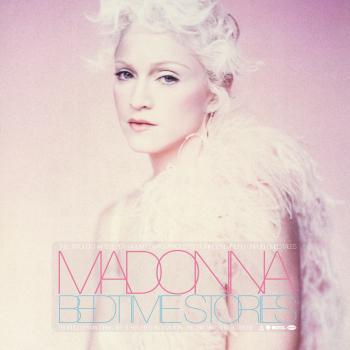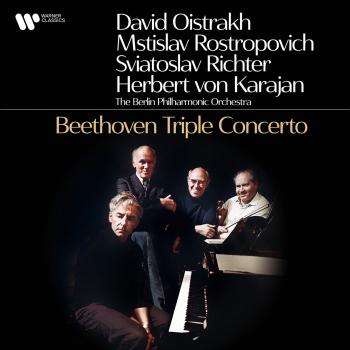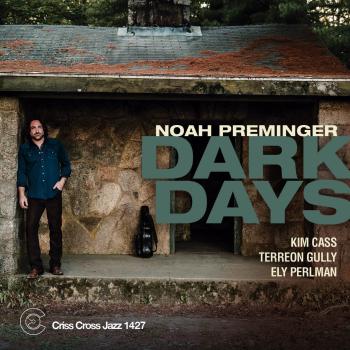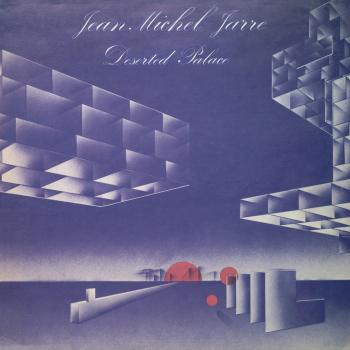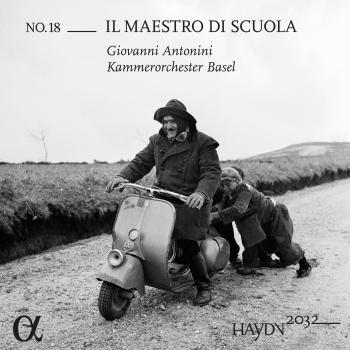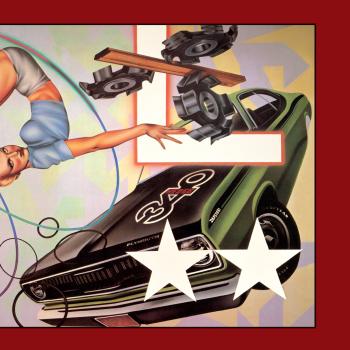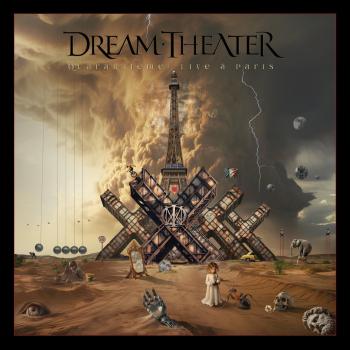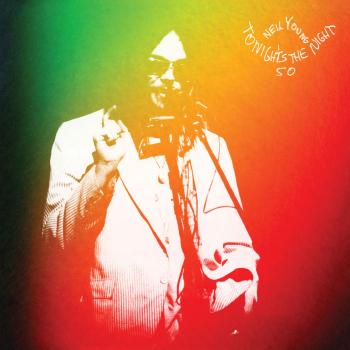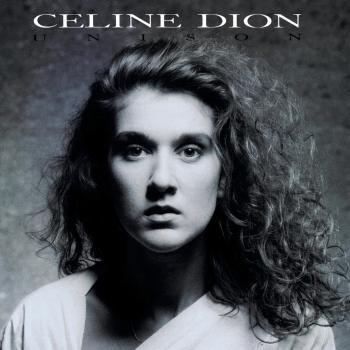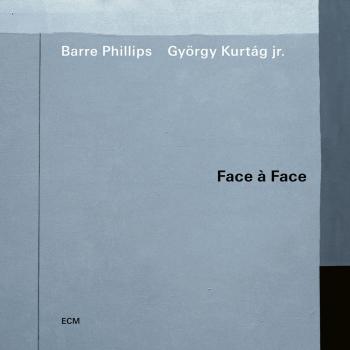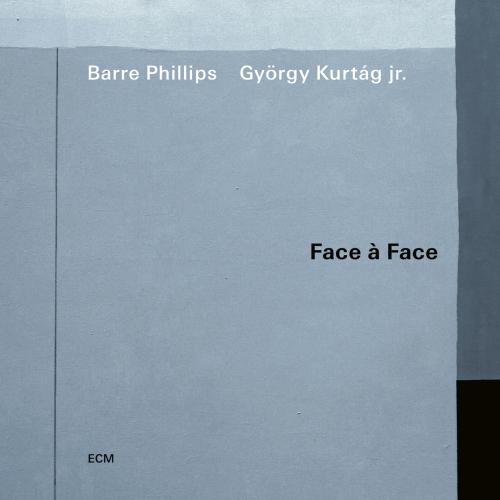
Face à Face Barre Phillips & György Kurtág Jr.
Album info
Album-Release:
2022
HRA-Release:
19.08.2022
Album including Album cover Booklet (PDF)
I`m sorry!
Dear HIGHRESAUDIO Visitor,
due to territorial constraints and also different releases dates in each country you currently can`t purchase this album. We are updating our release dates twice a week. So, please feel free to check from time-to-time, if the album is available for your country.
We suggest, that you bookmark the album and use our Short List function.
Thank you for your understanding and patience.
Yours sincerely, HIGHRESAUDIO
- 1 Beyond 01:30
- 2 The Under Zone 01:53
- 3 Two by Two 04:12
- 4 Across the Aisle 04:22
- 5 Algobench 01:17
- 6 Chosen Spindle 04:15
- 7 Extended Circumstances 03:04
- 8 Bunch 03:10
- 9 Sharpen Your Eyes 02:10
- 10 Ruptured Air 03:10
- 11 Stand Alone 03:17
- 12 Forest Shouts 01:24
Info for Face à Face
The grandmaster of improvised bass and the electronics-playing son of Hungary’s great contemporary composer share a deep commitment to making new music in the moment, informed by their different lives and experiences. With his subtle use of synthesizers and digital percussion, György Kurtág Jr shapes shifting spaces for Barre Phillips to negotiate, an acoustic labyrinth illuminated in detail in Manfred Eicher’s crystalline mix. Recorded at Studios La Buissonne in the South of France, Face à Face is a consistently fascinating album.
Barre Phillips’s End to End album, released in 2018, brought the documentation of his music for solo bass to a profound conclusion. Now Face à Face returns the emphasis to collaborative work, to dialogue and shared creation, in improvisations with György Kürtág Jr.
The Hungarian composer and improviser, last heard on ECM on the album Kurtágonals in 2009, describes his musical relationship with Barre as “one of the most important of my life” and on Face à Face it is immediately that the two musicians share an advanced understanding. It is an understanding patiently built up over the years. They have been developing their duo project – featuring double bass, synthesizers and digital percussion – since 2014, and it is texturally and dynamically absorbing, fascinating to follow.
“The first image that comes to me to characterize the way I play with Barre is architectural,” says Kurtág in the album’s liner notes. “I am dealing with a musician whose playing and phrasing changes constantly and in the most unpredictable ways possible. To be in relation with his music I think of it as an individual on the move and I build rooms of both time and space around him. Rooms that are themselves in constant evolution. I could also say that I create a shadow, the shadow of Barre’s double bass, of his playing…but it is a dynamic shadow in which I place ‘attractors,’ that is to say, leads, directions, which are followed or not, but which contribute to maintaining the intensity of the dialogue between us.”
Their musical points of origin are far apart, with San Francisco-born Barre roving the extremes of new jazz in the 1960s, from Archie Shepp’s band to the Jimmy Giuffre 3 to Chris McGregor’s Septet, while Kurtág Jr., son of composer György Kurtág and pianist Márta Kurtág, was growing up in a house full of music in Budapest.
Early in Phillips’s biography there are indications of an interest in electronics as a source for new sonorities. His recording Unaccompanied Barre (1968), was originally intended to provide material for electronic transformation by composer Max Schubel. Aquarian Rain (1992) was a collaboration with electroacoustic composers James Giroudon and Jean-François Estager, juxtaposing Barre’s bass with tape collage. And Mountainscapes, Barre’s 1976 masterpiece, includes sensitive duets with synthesizer player Dieter Feichtner, which one could view as a foretaste of the sound-world of Face à Face.
Moreover, although Phillips first came to wider recognition as a ‘jazz’ player his musical passions were always broader. “I was equally as excited by Bartók, Schoenberg and Stravinsky as I was by Duke Ellington, Charlie Parker and Ornette Coleman,” he has said. “The two influences were about 50/50 in my mind.” Barre’s long history with ECM began in 1971 with duos with Dave Holland on Music From Two Basses, and has since embraced collaborations with, among others, Terje Rypdal, John Surman, Paul Bley, Evan Parker, Joe Maneri and others.
György Kurtág Jr. left Hungary for France in the early 1980s, to undertake research at IRCAM in Paris where he had the opportunity to work with Peter Eötvös, Mauricio Kagel, Tod Machover, David Wessell, George Lewis and many others. In this period, his interests gradually shifted from a contemporary composition perspective to a wider view that incorporated instrument building and improvisation.
He has continued to work on many fronts. Together with his father György Kurtag Sr. he created the “electronic hybrid” composition Zwiegespräche for string quartet and synthesizer, subsequently realized with the Arditti and Keller quartets.
The ECM New Series album Kurtágonals, released in 2009, recontextualized pieces written by Kurtág Jr. over a 30-year period. In 2010 Kurtág Jr.’s trio Sc.Art (science and art) won the Hungarian Classic Contemporary Album of the Year award for its recording The Well-Tempered Universe.
In 2015, Barre Phillips established the Centre Européen Pour l’Improvisation (CEPI) in Puget Ville, Provence, to explore creative approaches to music making. György Kurtág Jr. interacted constantly with Barre in this context, eventually taking over the leadership of the association, and playing with the bassist also in a large ensemble, the Cepi Nomads, drawn from its members.
On Face à Face, György Kurtág Jr.’s electronic set up incorporates Yamaha DX7 IIFD, Korg T3 and Roland JD800 synthesizers, augmented by Roland Handsonic digital percussion, locating and projecting sounds to engage with Barre Phillips’s endlessly creative bass playing. There is a tactile quality to the encounter, vividly brought out in Manfred Eicher’s transparent mix and production, which encourages the listener to follow the music in all its unfolding detail.
György Kurtág Jr. continues to compose and research in France’s Bordeaux region. Early in 2022, Barre Phillips returned to the United States after more than 50 years in France. He is currently based in New Mexico.
Barre Phillips, double bass
György Kurtág jr., live electronics
Barre Phillips
“I play everything based on what my ear suggests I play, with no objective editing. And my ear is fed by a pool of accumulated musical experiences stored in my memory, mental memory and muscle memory. My active role is to do the best I can to play on my instrument what my ear is suggesting.”
Bassist Barre Phillips, who was born in 1934 in California but has lived in the south of France since the early 1970s, has been at the forefront of successive revolutions in improvised music. He initially followed an academic career to the age of 25, until one day, as he puts it, he “just flipped” and decided that he would pursue his passion for music “come hell or high water”.
Ornette Coleman set him on his jazz path around 1960 and he was soon working the extremes of the “New Thing”, playing improvised chamber music with Jimmy Guiffre and freely expressive “fire music” with Archie Shepp. In London in the late 1960s he played with John Stevens’ history-making Spontaneous Music Ensemble and with the South African musicians around Chris McGregor. He then co-founded the powerhouse group The Trio with John Surman and Stu Martin, which appeared on Mountainscapes. Phillips’ first recording for ECM, however, was the 1971 duo album Music for Two Basses with Dave Holland, the first duo for basses issued on any label (“a fine record by two masters of the instrument”, BBC).
After further recordings for the label with Surman, and with Terje Rypdal, and the solo bass album, Call Me When You Get There, Phillips experimented with music for bass, percussion and tape on Aquarium Rain and mediated between Evan Parker and Paul Bley on Time Will Tell and Sankt Gerold, the latter a live album, taped at the Austrian mountain monastery. John Fordham, writing about this album in the Guardian, praised Phillips for “on the one hand swirling, smoky bowed textures and on the other great tension between his precision of pitch and buzzing-bee abstractions”. The bassist also collaborated with Joe and Mat Maneri on two ECM discs, Tales of Rohnlief and Angles of Repose, the second of which was recorded at the ancient chapel of Sainte Philomène, which adjoins Phillips’s home in Puget-Ville.
György Kurtág jr
By the time the Hungarian composer György Kurtág was born in Lugos in 1926, the town was called Lugoj, and had, due to the peace treaty of Versailles, been ceded to Romania. Kurtág grew up in a multi-ethnic environment. It was as natural for him as for his friend György Ligeti, born in 1923 in Tarnaveni not far from Lugos, to speak three languages on a daily basis: Hungarian, Romanian and German.
The first significant pedagogue-personality Kurtág came in touch with was his piano teacher Magda Kardos at Temesvár/Timisoara. Her influence has stayed with him ever since. It was Magda Kardos who entrusted the young man to coach younger pupils – an activity that has kept him busy up to this day.
Kurtág met Ligeti at the entrance examination at the Budapest Academy of Music in 1946 for the first time. They were to form a life-long friendship. Some professors of the Academy gave Kurtág important impulses – such as Ferenc Farkas, who was also Ligeti’s teacher, as well as Leó Weiner, Lajos Bárdos, Pál Járdányi and others.
The next important encounter in Kurtág’s life occurred in Paris where he attended courses by Messiaen and Milhaud in 1957 and 1958. Most important of all, however, were the sessions with the psychologist Marianne Stein who specialised in artists. She tided him over a crisis which had paralysed his creativity for years. Kurtág says the meeting with Marianne Stein divided his life in two – she gave him a new lease of life, so to speak.
On his way back to Budapest Kurtág stopped over in Cologne where he first met Ligeti after the latter’s escape from Hungary in 1956. Ligeti introduced Kurtág to Stockhausen whose Gruppen made a tremendous impact on him. So did Ligeti’s Artikulation, realised in the electronic studio of West-German Radio.
Back in Budapest, Kurtág composed his first string quartet which he denoted as his Opus 1 – to signify that it marked the starting point of his oeuvre proper.
Kurtág is published in Hungary by Editio Musica Budapest. In the years of the cold war, when the world was divided into two on either side of the Iron Curtain, he needed another publisher as well to represent him in the west. Thanks to his friendship with Alfred Schlee, Director of Universal Edition, he signed a contract with UE. The pieces he wrote in those years were not easy to promote: the string quartet was followed by a wind quintet, eight piano pieces, eight duos for violin and cimbalom, The Sayings of Péter Bornemisza, a substantial work for soprano and piano and one of his key compositions, Four Capriccios for soprano and ensemble (his first piece for a larger combination of instruments which included a cimbalom), Four Lieder to poems by János Pilinszky, for baritone, two cimbaloms, a bass zither and some other instruments and In Memory of a Winter Evening for soprano, violin and cimbalom. Truly, works difficult to promote, especially those written for the cimbalom, which in those years had just a couple of players outside Hungary.
Political developments did away with the so-called socialist camp and with the disappearance of the Berlin Wall there disappeared the division of Europe as well. Kurtág no longer needed a publisher in the west and all his compositions have since been entrusted to Editio Musica Budapest. The ones that used to be shared by EMB and UE were duly divided up so that Universal Edition possesses the copyright of a range of pieces for the whole world. They include some of his pivotal early works, such as the Bornemisza-concerto and the Pilinszky Lieder (the only composition for which Kurtág has written programme notes).
Universal Edition is the world-wide distributor of Rückblick. Old and new for four instruments. Hommage à Stockhausen, apart from Hungary. Rückblick could be translated as “Looking Back”, incorporating as it does arrangements of old works, some of the UE, some EMB copyright, as well as some new ones.
It is a kind of ritual taking up a full concert. The composer has yet to make up his mind about its definitive shape – until he does so, the work cannot be printed in its entirety. That is why UE has published Fourteen Fragments from Rückblick, covering the pieces that are originally its copyright. The Fragments have a duration of some 17 minutes and are scored – like the rest of Rückblick – for trumpet, double-bass and keyboard instruments.
Kurtág recently wrote a brief piano trio which he says is one of his best compositions. Varga Bálint ligaturája ("The Ligatura of Bálint Varga") is published by Universal Edition. Hopefully it will be expanded by a second movement.
On 1 December 2013 Kurtág was honoured with the Royal Philharmonic Society Gold Medal at the Queen Elizabeth Hall in London. In 2015, he received the BBVA Foundation “Frontiers of Knowledge Award”.
Booklet for Face à Face

